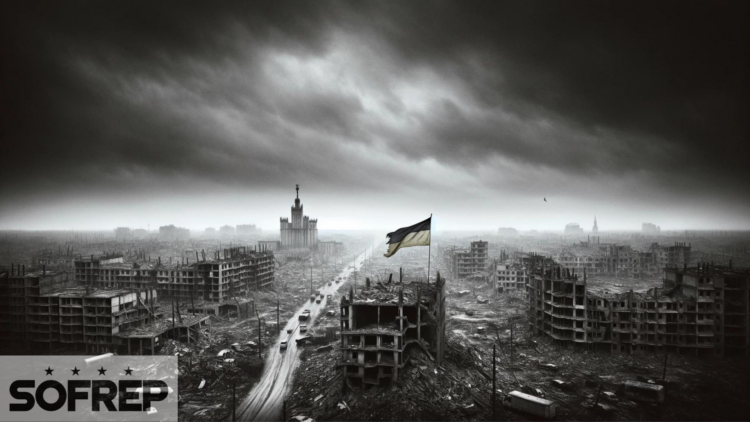In the murky and tumultuous battlefield that is Eastern Ukraine, the chessboard shifted dramatically on Saturday, February 17.
On a day veiled in the cold mist of geopolitical maneuvers, Russia swaggered into the spotlight with a bold declaration: Avdiivka, a pivotal city in the heart of the conflict zone, had fallen into its iron grasp. This news thundered across the wires shortly after Ukraine, in a move as strategic as it was heart-wrenching, announced a tactical withdrawal of its forces from the city.
Why the pullback, you might ask? The answer, stripped of any diplomatic varnish, boils down to a raw necessity of warfare: the preservation of life.
Ukrainian troops, staring down the barrel of ammunition shortages and outnumbered in the grim dance of war, chose survival over a Pyrrhic victory.
President Volodymyr Zelensky, speaking from a security conference in Munich, didn’t mince words, highlighting that “the ability to save our people (Ukrainians) is the most important task for us.”
“In order to avoid being surrounded, it was decided to withdraw to other lines,” Zelensky added. “This does not mean that people retreated some kilometers and Russia captured something. It did not capture anything.”
Command Decisions and the Cost of Withdrawal
Enter Oleksandr Syrsky, Ukraine’s newly minted commander of the armed forces, who made the call to retreat.
This wasn’t flying the white flag of surrender but a strategic pivot to regroup at positions where the odds might tip back in their favor.
Yet, the battlefield is unforgiving, and the withdrawal cost Ukraine several of its servicemen, now in enemy hands.
— Isobel Koshiw (@IKoshiw) February 17, 2024
The Saga of Stalled Aid
The backdrop to this somber military ballet is a saga of stalled aid and unfulfilled promises.
A $60-billion lifeline from the US, meant to bolster Ukraine’s defenses, languishes in the quagmire of Washington’s politics.
Despite this, Zelensky’s resolve remains unshaken, buoyed by assurances from President Joe Biden that the gears of assistance will grind forward.
The Fall of Avdiivka: A Tactical Victory with Strategic Questions
But let’s not lose sight of Avdiivka itself. This city, now a symbol of the conflict’s brutality, was more than just a dot on the map.
It was a bastion of resistance, a point of contention that saw some of the fiercest fighting in a war nearing its two-year mark.
And while its fall is a tactical victory for Russia, the strategic gain remains a topic of hot debate. Does Avdiivka’s capture herald a shift in the war’s tide, or is it a pyrrhic victory for the Russians in a conflict riddled with them?
Changes in the situation in Avdiivka area on the map starting January 1, 2024.
On February 17, Ukraine was forced to retreat from the city. pic.twitter.com/Dcn7QyLbn6
— Clash Report (@clashreport) February 18, 2024
On the ground, the sentiment among Ukrainian servicemen is clear.
The withdrawal, though painful, was a necessity.
In the calculus of war, the value of a city must be weighed against the lives it costs to hold it. And in Avdiivka’s case, the cost had become too steep.
The Human Cost: Avdiivka’s Ruins
The destruction wrought on Avdiivka is a testament to the war’s ferocity. Once a thriving city, it now lies in ruins, a ghostly reminder of the human cost of conflict.
While this is a long-anticipated withdrawal, many are voicing their anger at lack of sufficient munitions support from the West
The Ukrainian officials are much more diplomatic. They mostly talk about lessons learned and what was missing without blaming anyone for that 2/
— Tymofiy Mylovanov (@Mylovanov) February 17, 2024
The strategic importance of Avdiivka, hotly contested by military analysts, pales in comparison to the devastation experienced by its inhabitants and the Ukrainian forces fighting to defend it.
Implications for Eastern Ukraine and Beyond
As Russia cements its control over Avdiivka, the broader implications for Eastern Ukraine and the international community loom large.
This isn’t just a territorial gain; it’s a statement, a move that will undoubtedly influence the ongoing struggle for control in the region.
The war in Ukraine, far from a localized skirmish, is a chess game played on a global board, with each move reverberating through the corridors of power around the world.
President Volodymyr Zelensky delivered a speech at the Munich Security Conference on Feb. 17, urging more security assistance from Ukraine's allies amid ammunition shortages and the recent withdrawal from the embattled city of Avdiivka.
📽️: President's Office pic.twitter.com/eWShNP3Iyd
— The Kyiv Independent (@KyivIndependent) February 17, 2024
In the end, the fall of Avdiivka is a chapter in a much larger story, one that speaks to the enduring spirit of the Ukrainian people and the complex, often murky, realities of modern warfare.
The road ahead is uncertain, and the conflict in Ukraine is far from over.
But in the dust and rubble of Avdiivka, there lies not just a tale of territorial conquest but a narrative of resilience, strategy, and the indomitable will to persevere in the face of overwhelming odds.
As the situation evolves, the world watches, waiting to see how the next chapter in this tumultuous saga will unfold.











COMMENTS
You must become a subscriber or login to view or post comments on this article.